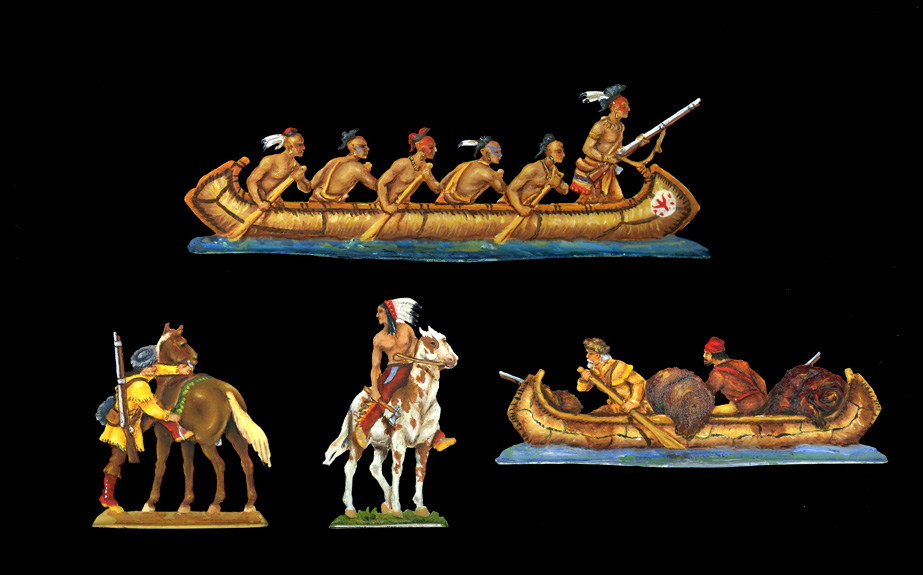
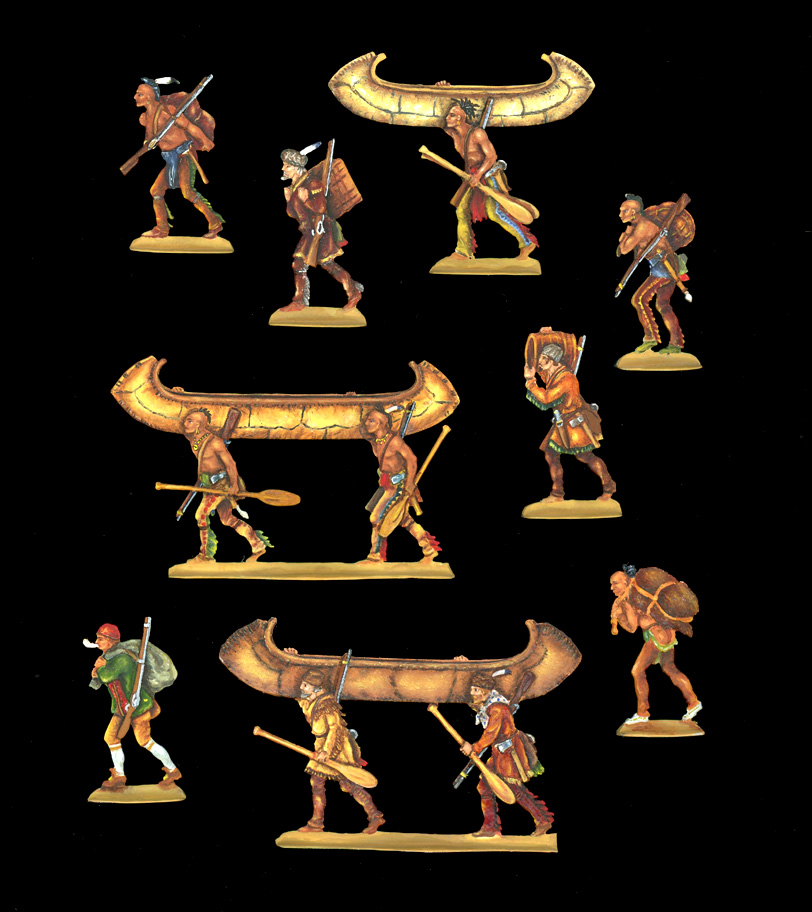
Trappers, voyageurs and Iroquois indians carrying canoes and goods, 18th century Canada
The voyagers are often refered to as "the backbone of the fur trade" and thanks to them the infant nation of Canada was opened up for colonisation.
The French Canadians adopted the Indian canoe and paddle. These crafts were perfectly built for the often swift, tumultuous Canadian rivers. The French own heavy wooden boats built of planks could not do the job here.
The voyageurs did not live to be old. It was a truly hard life. In addition to the constant danger of drowning, they risked to brake arms and legs, twist their spine and the ice cold water in which they waded for hours in wet clothing made for rheumatism.
These men were lonely since few white females came over to the New World in the early days. The men needed a woman to take care of food and clothing and the native women were obedient, patient, hardworking and skillful in crafts of their culture. So mixed marriages were common for these early adventurous men.
Drawing L. Madlener, engraving L. Frank, edition H. Loy.
Owner of the slate stones is the Plassenburg Museum, Kulmbach. Castings from the moulds are sold by Sixtus Maier Zinnfiguren.

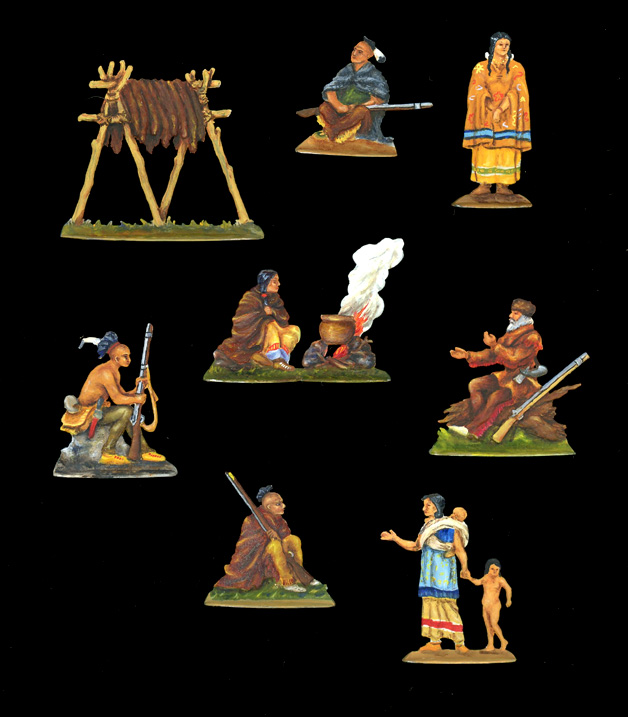
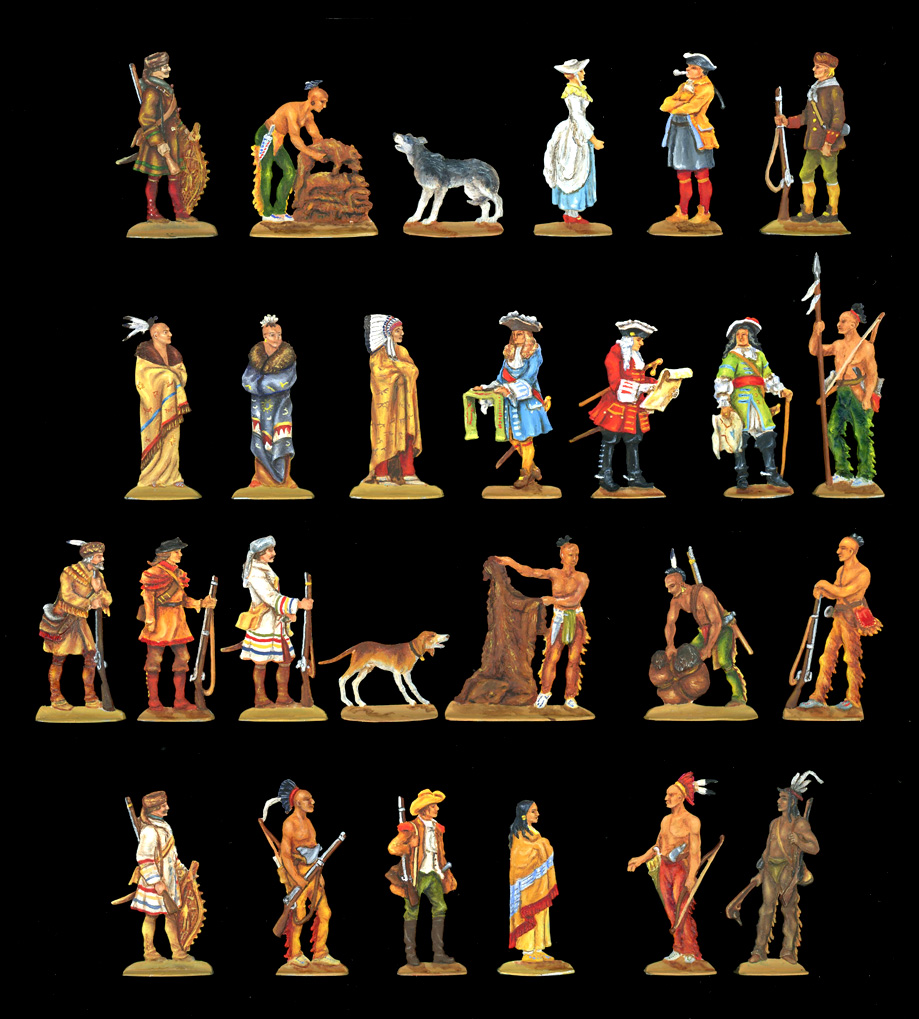
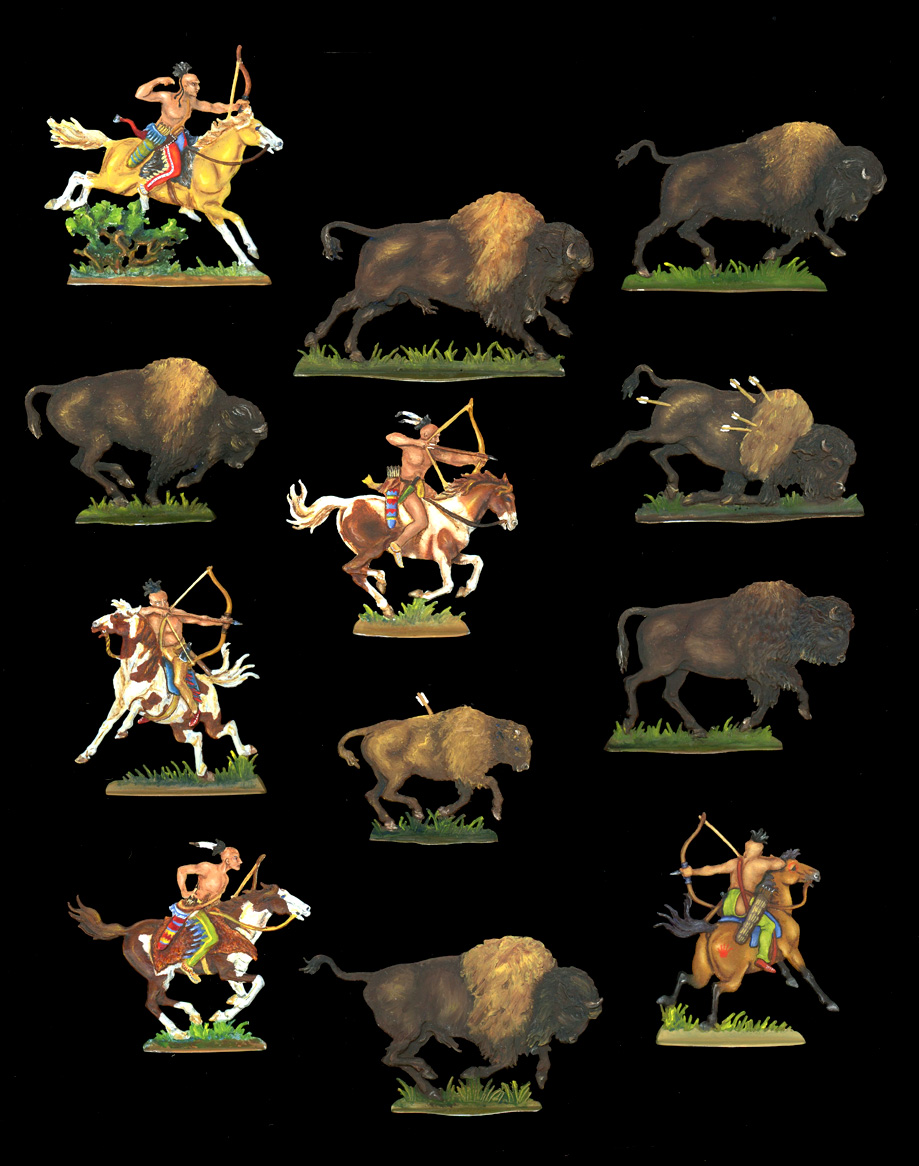
Plains indians on buffalo hunt
The buffalo meant everything for these indians, providing them with food, clothes, shelter and even fuel (buffalo-chips). At the beginning of the 19th century there was some 60 million buffalos roaming the North American prairies. The white man figured out that if the base of the plains indians was taken away the colonization of the whole continent would be possible. In 1894 there were some 800 buffalo individuals left. Today there are about 500 000 buffalos in North America.
Drawing L. Madlener, engraving L. Frank, edition H. Loy.